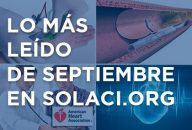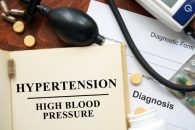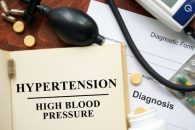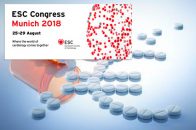Atrial fibrillation is the most common arrhythmia and its combination with a history of acute myocardial infarction or coronary angioplasty is quite frequent. According to this study (recently published in JACC), in a real-world population, the combination of direct anticoagulant agents and dual antiplatelet therapy reduces significantly the risk of bleeding and provides similar thromboembolic…
New Anticoagulant Agents in Atrial Fibrillation in Latin American Patients, Specifically
There is limited information on the use of antithrombotic therapies and their outcomes in Latin American patients with atrial fibrillation. This stands true in almost all aspects of medicine: large multicenter randomized studies rarely include Latin American countries, and when they do, the population included is not representative of the overall population. The only exception…
Galileo: Rivaroxaban After TAVR Stopped Due to Early Event Rates
Patients undergoing transcatheter aortic valve replacement (TAVR) randomized to rivaroxaban in the GALILEO trial experienced higher risk of all-cause death, thromboembolic events, and bleeding compared with patients who received antiplatelet therapy. The GALILEO trial was halted after an early peek of events at the data from the rivaroxaban (Xarelto; Bayer/Janssen) arm. These events included higher…
Is Stage 1 Hypertension as Defined in ACC/AHA Guidelines Associated with Any Events?
New information has been published fast, and what we thought we knew about hypertension has also changed fast. One of the biggest differences between American and European hypertension guidelines is whether patients with systolic blood pressure (BP) 130/139 mmHg and diastolic BP 80/89 mmHg are considered hypertensive or not. The only place where enough patients with these…
The 10 most read articles of September
1- High-Sensitivity Troponins Turned All Events into Infarctions; the 4th Universal Definition Clarifies Things Myocardial infarction or myocardial injury? The Fourth Universal Definition of Myocardial Infarction (an update of the 2012 version) is here to clarify that not all cases of elevated cardiac troponin values are acute myocardial infarctions. Read more 2- A Simple…
TCT 2018 | OAC-ALONE: Anticoagulation Alone 1 Year After Stenting in Patients with Atrial Fibrillation
Up to now, there had been no randomized controlled trial assessing oral anticoagulation alone vs. oral anticoagulation plus antiplatelet therapy in patients with atrial fibrillation 1 year after stenting in a setting of stable coronary disease. Such was the vacuum that this work, presented at TCT 2018 and published simultaneously in Circulation, attempted to fill. This trial…
What to Do with Blood Pressure Levels Between 130/80 and 139/89 mmHg
The decision to be made with a treatment-free patient with systolic blood pressure over 160 mmHg or diastolic blood pressure over 100 mmHg is an easy one. All guidelines agree: treatment should be started immediately alongside lifestyle changes. In the case of patients with systolic blood pressure between 140 and 159 mmHg or diastolic blood pressure between 90…
Ten Commandments of the European Hypertension Guidelines: Several “Sins Allowed” Compared with American Guidelines
These new hypertension guidelines (which were as long-awaited as the American ones, back then) finally emerged in Barcelona, at the European Society of Hypertension (ESH) Congress. The document was issued jointly with the European Society of Cardiology (ESC). These guidelines provide recommendations for physicians to diagnose hypertension, evaluate risk, and determine when and how to…
Relive the SOLACI-SOCIME 2018 Congress
Over 2180 professionals from all over the world gathered in Mexico City to continue developing interventional cardiology in Latin America. Relive the event through this video! We are interested in your opinion. Please, leave your comments, thoughts, questions, etc., below. They will be most welcome.
Antiaggregation Time after Treating Bifurcations
Defining dual antiplatelet therapy (DAPT) seems a never-ending story. We go from trials showing the safety of shorter schemes thanks to new generation stents to others suggesting up to two years of DAPT. Rather than finding a general scheme, it seems to be about adjusting DAPT on a case by case basis, according to ischemia…
ESC 2018 | GLOBAL LEADERS: Ticagrelor Monotherapy Is Not Superior to Classic Therapies After Angioplasty
Dropping aspirin after the first month and continuing with ticagrelor monotherapy was not better than standard dual antiplatelet therapy (aspirin plus ticagrelor or clopidogrel) in patients who underwent coronary angioplasty. Patrick Serruys presented this work (which was simultaneously published in The Lancet) at the European Society of Cardiology (ESC) Congress 2018 and explained that, given…










